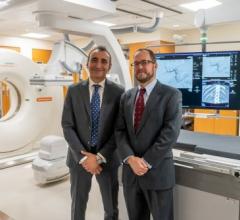December 15, 2010 – When physicians who are not radiologists refer patients to imaging facilities they own or lease, their patients don’t always benefit, according to a series of studies in Health Affairs.
In fact, self-referrals often lead to overuse of services, escalate spending and rarely shorten the duration of illness. The findings challenge what proponents argue are the merits of having non-radiologist physicians acquire imaging equipment.
American College of Radiology researchers Jonathan Sunshine and Mythreyi Bhargavan tested the argument that self-referrals lead to a shorter turnaround time for imaging. They examined how often an office visit to a physician and a self-referred imaging procedure took place on the same day. Based on Medicare data from 2006 and 2007, they found one-fourth of self-referred imaging was for chest and musculoskeletal X-rays and almost three-quarters of these patients had their imaging on the same day.
But when it came to high-tech imaging, such as nuclear medicine, computed tomography (CT) and magnetic resonance imaging (MRI), Medicare patients got same-day service only 15 percent of the time. It makes more financial sense to schedule appointments ahead of time to maximize use of the expensive machines rather than have them sit idle for walk-ins. But the authors noted that the main justification for self-referrals is same-day service – a benefit physicians generally don’t seem to be offering.
Medicare now bans self-referral when the physician has a financial interest. But it does allow self-referral for designated services, including imaging, if the service takes place in the doctor’s office.
A second study in the journal, by Laurence Baker, chief of health services research at Stanford University, shows that when nonradiologists acquire MRI equipment, use of services and overall spending rise. Baker examined a six-year period of imaging use and spending trends by patients of orthopedists and neurologists, who began billing for MRI scans on equipment they owned. Once they began billing for MRIs, both specialties ordered significantly more scans. The number of MRI procedures used by orthopedists increased 38 percent within 30 days of a first visit by a patient. Neurologists also prescribed substantially more MRI services once they began to bill.
“These changes in use were largely driven by a discrete jump that occurred when physicians first billed for MRI,” Baker said, adding that these increases persisted over time. Developing ways to understand the value of new technologies and evaluate their cost effectiveness would help target efforts to curb unnecessary use to areas where the greatest concerns about efficiency are apparent, he said.
For more information: www.healthaffairs.org


 December 15, 2025
December 15, 2025 









